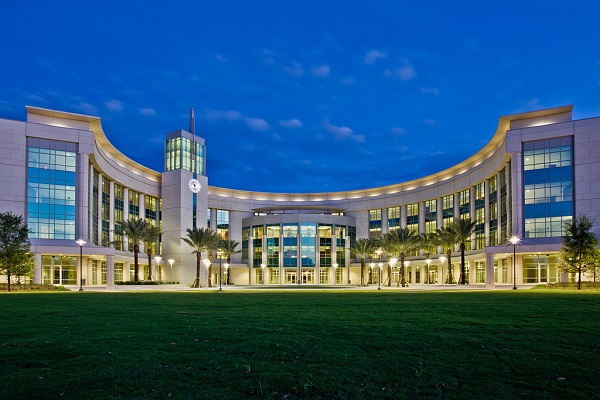UCF Students Awarded $25,000 EPA Grant for Developing Toxin Biosensor to Ensure Safe Drinking Water
The U.S. Environmental Protection Agency has awarded a $25,000 grant to a team of UCF engineering students for the development of a biosensor that can detect harmful algal toxins in drinking water sources.
The UCF Knights – environmental engineering majors Jennifer Hughes and Lance-Nicolas Rances and environmental engineering doctoral student Stephanie Stoll, along with associate professor and principal investigator Woo Hyoung Lee – are one of 21 student teams to receive the funding through the agency’s People, Prosperity and the Planet (P3) Program. This program is designed to support research that addresses environmental and public health challenges.
“I am thrilled and honored to have received this award for our research,” Hughes says. “For the past year, I have focused on microcystin-detecting biosensors, and it feels great to be recognized for my undergraduate research.”
Microcystins are the most common toxins found in fresh water, and the most harmful type is microcystin-LR (MC-LR). When high levels of MC-LR accumulate in water, they form a blue-green algae bloom that can disrupt the aquatic ecosystem by depleting oxygen, blocking sunlight and altering the nutrients that marine life feeds on. In Florida, blue-green algae are a common problem due to the warm temperatures, excess nutrients and stagnant water found in lakes, rivers or ponds. When ingested by humans, it can cause abdominal pain, a sore throat or gastrointestinal distress. At elevated levels, it could lead to damage of the liver or kidneys.
To test water sources for MC-LR, samples must be transported to a laboratory where they can be examined by trained technicians. The process can be both time-consuming and costly, but the UCF-developed biosensor could solve those problems.
The UCF-developed device would be portable, cost effective and located onsite, so that MC-LR blooms could be detected early on. The device will use an antibody to detect the harmful algae, and the students are currently fine-tuning its detecting capabilities.
“Our next steps at the moment are to refine the biosensor to make its detection capabilities as accurate as possible,” Rances says. “There are several interfering toxins that can be detected in place of MC-LR, so honing in on the right antibodies that are MC-LR sensitive will help enhance what may be later made available for use in real-world scenarios.”
In a real-world scenario, once the biosensor detects MC-LR in drinking water, health officials can take appropriate action such as treating the water and notifying the public.
As Phase I recipients, the students will use the funding to deliver a proof of concept. They’re also eligible to compete for Phase II funding, worth up to $100,000, to help them implement their design.
Although the sensor will take time to develop, both Hughes and Rances are excited to work on a project that can have a positive impact on local waterways.
“Algae blooms are one of the biggest conversation points regarding Florida’s water health,” Rances says. “I am motivated to continue the MC-LR research to expand the capabilities of our coastal regions to understand and potentially combat harmful algae bloom events.”

